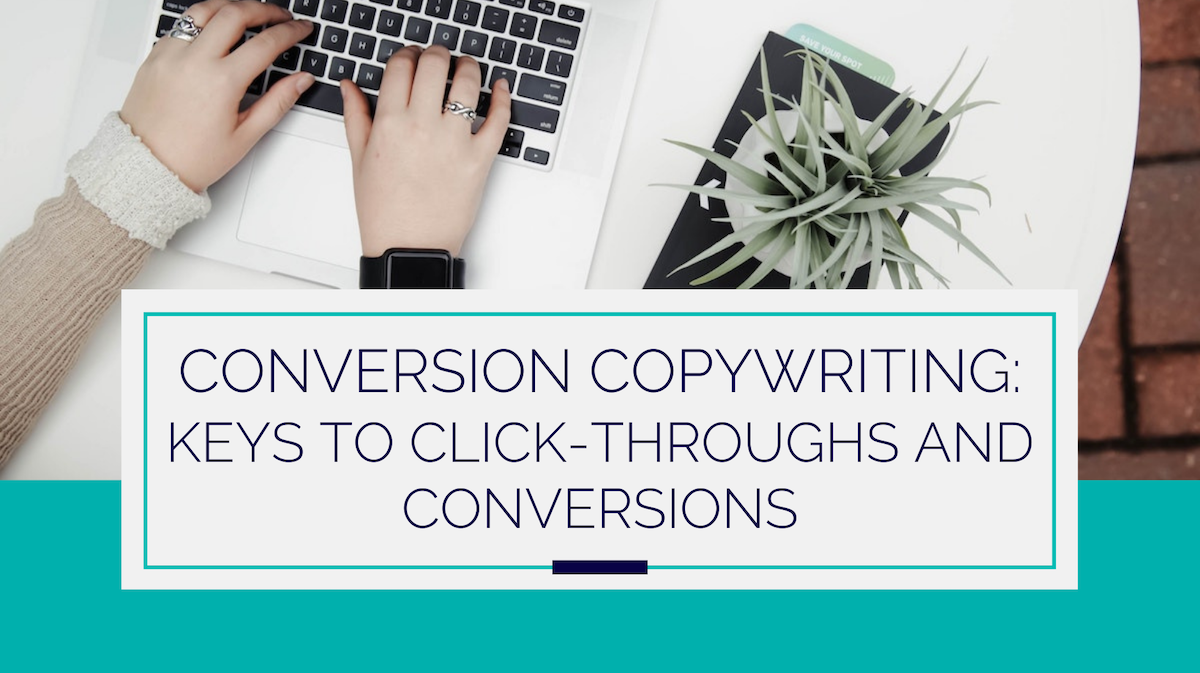Webpage copy, blogs, downloadable, content, social media, paid ads. All of these are areas of digital marketing designed to spread the word of your business, and meant to be engaged with to gain more traction and more business.
However, all of these pieces look very different and have very different implementation tactics and campaign strategies. Marketing is made up of so many pieces that all work in tandem to create a comprehensive strategy that it can be hard to see the throughline.
The one thing these all have in common?
Good and effective copywriting.
Beyond that, we look at persuasive copywriting, or conversion copy, that sells to your prospects, engages your reader, and is ultimately responsible for, well… conversions.
What is conversion copywriting?
Conversion copywriting takes your reader or consumer from the sales phase to the “yes” phase. Persuasive sales writing shows the reader that the product or service is necessary to their well-being, whether it’s a new skin-care line or CRM software. Copy convinces the consumer that they DO in fact need that product or service.
Writing copy that’s simple enough for a reader to understand the technicalities of a product or service, yet rich enough that they comprehend how indispensable it is for them is tricky. Even trickier? Getting people to read the copy at all.
Tailor your materials to your audience
The first step to excellent conversion copy is research, research, research! You can’t hook a reader unless you know exactly what it is then they need. We talk a lot about tailoring your materials to your audience—but you need to know what it is the audience needs first.
Start by creating your ideal client persona by developing a three-dimensional person in your mind, someone who needs exactly what you offer. What does this person’s life look like? What problems could your product solve? What are the pain points and things that cause them frustration?
This will help you target your research, and you’ll then find a way to be the one to offer the things they need to remedy their pain point. The content you produce must serve a purpose, and it must solve a problem for your reader.
Pain, Agitate, Solution
When convincing a reader to buy, we use the “Pain, Agitate, Solution” method. Addressing your audience’s pain points and then solving them is the first step in your research. Identify this person’s major problem, find out what kind of material or service could solve this person’s problem, and be the one to deliver it.
We can use this framework to outline our conversion copy. This is the part that really drives conversions—where you can really use the momentum of the language that inspires engagement on your audience’s part.
Pain: Address your audience’s problem.
Relate to your audience. Make them feel seen and heard, and understood. Your introduction is crucial to your engagement for your materials, whether it’s a blog, an email campaign, or even a social ad. Use this stage to capture your audience’s attention by appealing to their human emotions. You’re setting up the problem—but let them fill in the gaps here with their own unique perspective.
Agitate: Twist the knife.
You’ve set yourself up and you’ve outlined the problem. Now, you can really engage with your reader. Use this section of your writing to tell an anecdote and to further relate to your audience. Dig deeper into why not having a solution would be inconvenient for them.
Be careful here: this isn’t tragic. This is straightforward and informative. Don’t pander too much to their negative emotions. Nothing should seem hopeless, or beyond repair. Because that’s where the next phase comes in…
Solution: Make yourself the answer.
Provide your reader with the solution to their problem—which includes your business or your service! Offer the audience the information necessary to solve their problem and provide them with the resources to understand what’s going on. Make your reader feel grounded and informed in the solution—but not like they could implement it themselves.
One of the most important parts of conversion copywriting is making yourself part of the solution, rather than just the method of implementation. Your reader should leave the ad copy they’re reading and want to default to your expertise, and they should finish reading your blog with no doubt in their mind that you’re the service provider to execute their resolution.
Tone: A fine line between sales and conversation
The key to good conversion copywriting is that it provides answers and resources to consumers with the goal of driving profitable customer action without traditional blatant sales techniques. This means that the schmoozy and schmaltzy tone of sales is definitely a no-go when it comes to your ad copy, email campaigns, or landing pages.
There are two key factors to consider when determining what tone to use for your brand, and these two key principles can make or break your audience’s reaction to your work.
Key #1: Write in a way that translates your values.
You need to communicate the core of your business in order for consumers to have an authentic reaction and be able to relate to your pitch. Obviously, this will differ vastly from business to business (a corporate law firm would have different values than a small bakery) but both would need to adapt their language to reflect what they find important.
Key #2: Write to people like they’re human beings.
You’re selling to people. Not business, not AI, but actual human people.
No matter the scale of the sale, the point of contact you’ll reach with your copy is a singular person first. It’s your duty to engage them on a human level.
For example, remember that social ads are still social media. Engage with your readers the way you might on social media—conversational, direct, and with humanizing aspects. Or when you show up in a reader’s inbox—engage with them in a way you might send an email to a colleague.
Tell your readers a story they need to hear. Engage them on an emotional level, and use your tone to build momentum and urgency.
The Power of the CTA
The final step to closing a deal is prompting action on the part of the reader. The perfect and inspiring call to action can be the magic that will close your sale.
It’s important to choose a CTA that is:
- Relevant to your content
- Resonant to your ideal reader
- Absolutely irresistible
Your reader should look at your call to action and feel as though they can’t help but click on it. Maybe it’s a discounted rate for a service (seriously, who can resist a discount!), maybe it’s a free downloadable guide that gives them the answer they need for the problem at hand, and maybe it’s a CTA that makes you and your services accessible and attainable, such as a “Get in touch!” or “Schedule a Call” button.
No matter what it is, your CTA should flow naturally in your copy, and there should be no question on whether or not to click it—because your reader has already clicked it!
One important note: be cautious not to over-promise with your call to action. If the CTA looks like one thing, and the reader clicks and you don’t deliver the product, service, or discount promised, your business can lose credibility, and maybe even the sale. If you can’t deliver, don’t write it!
Writing to educate, educating to convert
It sounds like a lofty goal, to use copy to convince someone to do something. But we do it all the time: we appeal to people, we help guide them through their problems, and we help them out the other side with a solution. And we make it enjoyable along the way!
That’s what we aim to do with our conversion writing. And we as copywriters are also aiming to help people through with a bit more knowledge than they came to us with. After all, isn’t that our duty?
So now that you’ve (maybe) mastered conversion writing—how do you put it to use and execute campaigns that can convert? You’ve come to the right place.
Let us know how we can help. There might not be a way to “perfect” conversion copywriting or marketing campaigns… but we’re pretty close. 😉



